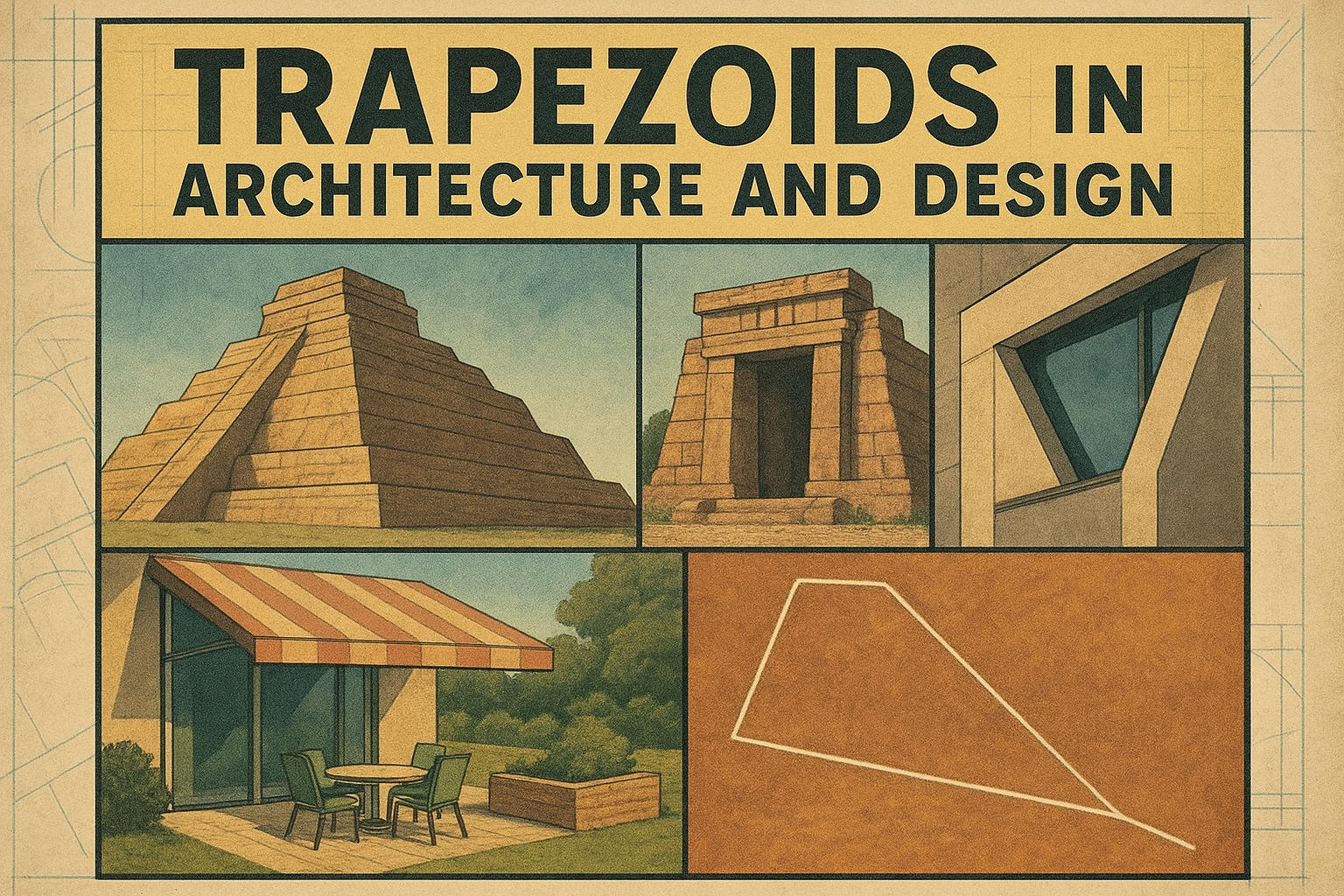Ever noticed how driveways, patios, or garden layouts aren’t always neat rectangles or squares? That’s because real-world spaces often take on more creative forms—like trapezoids—to make better use of space or to add a touch of design flair. The catch? These angled shapes can make concrete calculations a bit tricky—unless you know how to handle them.
Want to learn more about other shapes? Try our full collection of Square Footage Calculators.
What Is Trapezoid Square Footage?
A trapezoid is a four-sided shape—also known as a quadrilateral—with one pair of parallel sides. These are called the bases, while the two non-parallel sides are referred to as the legs.
When we talk about trapezoid square footage, we’re simply measuring the area inside the shape—how much flat surface it covers. This is especially useful in real-life situations like measuring an angled ceiling, an irregularly shaped yard, or a custom patio layout.
The formula is easy to understand: think of it as averaging the lengths of the two bases, then multiplying that by the height (the straight-line distance between them). That gives you the total area in square feet. If your layout has straight, right angles, the Rectangle Square Footage Calculator will get the job done even faster.
Formula for Trapezoid Square Footage
Calculating the area of a trapezoid might look a bit tricky at first, but the formula is actually straightforward and super useful—especially when you're dealing with irregular spaces like garden beds, uneven land plots, or custom flooring layouts.
The standard formula is:
Area = (a + b) × h / 2
Where:
-
a = length of the top base
-
b = length of the bottom base
-
h = height (the vertical distance between the two bases)
In simpler terms, you add the two parallel sides, multiply by the height, then divide the result by two. This gives you the total area—or square footage—of the trapezoid.
This formula works for all types of trapezoids—whether they’re symmetrical, angled, or irregular—as long as you have one pair of parallel sides.
Need to calculate areas for other shapes too? Try using our Square Footage Calculator for quick and accurate results across a variety of layouts. You’ll find this and a variety of other shape-based calculators in the Math Tools section—built to make geometry easier for everyone.
How Ancient Builders Used Trapezoid Shapes
The use of trapezoid shapes in construction and land management dates back thousands of years—when geometry wasn’t just academic, it was a practical necessity. In ancient Egypt, a group of early surveyors known as “rope stretchers” played a key role in reclaiming and measuring farmland after the Nile’s annual floods.
Each year, as the floodwaters receded, the boundaries of fields would shift. Because nature rarely creates perfect rectangles, many plots took on irregular shapes, often resembling trapezoids. Using ropes with evenly spaced knots, these surveyors could create straight lines and right angles. From there, they broke the land into familiar shapes—trapezoids among the most common—and used straightforward calculations to determine the area.
Their accuracy was impressive for the time. The Rhind Mathematical Papyrus, an ancient Egyptian text from around 1650 BCE, includes formulas for calculating the area of uneven quadrilaterals that closely resemble the trapezoid area formula we still use today².
These early techniques were more than just clever—they were foundational. They helped shape how civilizations divided farmland, built irrigation systems, and managed property. And even now, thousands of years later, the same principles are still at the heart of surveying, architecture, and civil engineering.

For spaces that taper to a point or form sloped edges, the Triangle Square Footage Calculator offers a quick solution.


